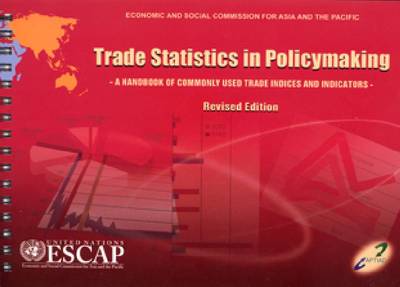Studies in trade and investment
3 primary works • 4 total works
Book 80
International production sharing and exchange rates of Asian countries
by Witada Anukoonwattaka
Published 30 October 2016
Recent years has seen a sharp increase in the trade of intermediate goods between ASEAN countries and China, reflecting the emergence of China as a regional 'assembly centre' and sourcing the bulk of parts and components from countries in South-East and North-East Asia in the production of final goods for export to the United States and the European Union. This expansion of trade in intermediates is closely linked to the spread of international production networks (IPNs) in Asia. The expansion raises important new analytical and policy challenges generating rapidly growing literature. This study focuses on how new patterns of production and trade influence the effects of exchange rates on international trade flows of manufactured goods, and draws attention to several ways in which IPNs have altered the nature of international production and trade
Book 81
Regional integration and labour mobility
by Witada Anukoonwattaka and Adam Heal
Published 25 May 2016
This paper, published as part of the ESCAP series Studies in Trade and Investment, explores the linkages between trade, labour mobility and development in the Asia-Pacific region. The paper moves from an analysis of recent trends in regional labour mobility through an examination of the connections between trade, migration and development. Finally it considers how migration could be better governed at the multilateral, regional and bilateral levels. A central theme of the paper is that, when properly governed, labour mobility can deliver large and sustained development gains. Improving cross-border labour market access, particularly for people from developing countries, therefore needs higher prioritization by regional policymakers. At the same time, the concerns of receiving country populations around higher levels of immigration also need to be addressed. Striking this balance will require, in particular, the expansion and further adoption of co-operative agreements between sending and receiving countries which provide labour market access in return for more cooperation in migration management and enforcement.
Book 89
The study on Services and Global Value Chains: Asia-Pacific Reality reviews the facts and issues related to the roles of services in global value chains. It provides the framework to understand and assess the linkages among different services as well as between services and manufacturing industries. It offers evidence on the contributions of services in the global value chains in Asia-Pacific region and the rest of the world. It also includes case studies about the services inputs to the value chains of specific industries in the region. The study also reviews current policy issues related to trade in services. Ultimately, the study provides lessons for Asia-Pacific economies which see services and participation in GVCs as important pathways toward sustainable development.
The objective of this handbook is to be used as a reference in preparation of analysis of already available merchandise trade statistical information for assessment of various issues, discussion on negotiating positions and ultimately for conducting consultations. Indicators are grouped in the following categories: trade and economy, trade performance, direction of trade, sectoral structure of trade and protection.



